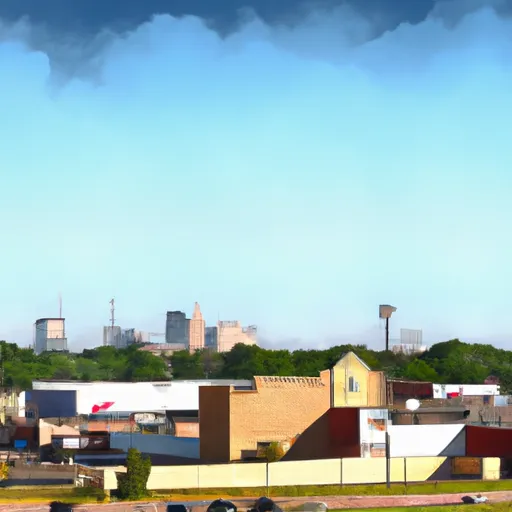-
 Snoflo Premium
Snoflo Premium
Get unlimited access to all our content
With no Ad interruptions! - Start Your Free Trial Login with existing account
Wylie
Eden Index
Climate
9.7
•
Recreation
4.2
•
Community
4.3
•
Safeguard
6.4/10

Wylie, Texas is a vibrant city located in Collin County, just northeast of Dallas. The region experiences a humid subtropical climate with hot summers and mild winters. Summers are typically hot and humid, with temperatures reaching highs in the 90s°F (32-37°C), while winters are generally mild, with temperatures averaging in the 40s°F (4-9°C). Rainfall is evenly distributed throughout the year, with thunderstorms occurring during spring and summer months.
Wylie is blessed with several hydrological features, including Lake Lavon, which lies to the east of the city. This reservoir not only provides a source of drinking water but also offers numerous recreational activities such as fishing, boating, and swimming. Wylie is also home to several parks and green spaces, including the 211-acre Founders Park, where visitors can enjoy picnicking, hiking, and sports fields.
Outdoor enthusiasts can explore the 1,870-acre East Fork Park, situated on the eastern shores of Lake Lavon, offering camping, hiking, biking trails, and horseback riding. In addition, Wylie has a variety of sports complexes, golf courses, and community centers, providing ample opportunities for outdoor recreation and leisure activities.
What is the Eden Index?
The Snoflo Eden Index serves as a comprehensive rating system for regions, evaluating their desirability through a holistic assessment of climate health, outdoor recreation opportunities, and natural disaster risk, acknowledging the profound impact of these factors on livability and well-being.
Climate Health Indicator (CHI): 9.7
Wylie receives approximately
1018mm of rain per year,
with humidity levels near 78%
and air temperatures averaging around
18°C.
Wylie has a plant hardyness factor of
8, meaning
plants and agriculture in this region tend to thrive here all year round.
By considering the ideal temperature range, reliable water supplies, clean air, and stable seasonal rain or snowpacks, the Climate Health Indicator (CHI) underscores the significance of a healthy climate as the foundation for quality living.
A healthy climate is paramount for ensuring a high quality of life and livability in a region, fostering both physical well-being and environmental harmony. This can be characterized by ideal temperatures, reliable access to water supplies, clean air, and consistent seasonal rain or snowpacks.
Weather Forecast
Streamflow Conditions
Upper Trinity
Area Rivers
Upper Trinity
Snowpack Depths
Upper Trinity
Reservoir Storage Capacity
Upper Trinity
Groundwater Levels
Recreational Opportunity Index (ROI): 4.2
The Recreational Opportunity Index (ROI) recognizes the value of outdoor recreational options, such as parks, hiking trails, camping sites, and fishing spots, while acknowledging that climate plays a pivotal role in ensuring the comfort and consistency of these experiences.
Access to outdoor recreational opportunities, encompassing activities such as parks, hiking, camping, and fishing, is crucial for overall well-being, and the climate plays a pivotal role in enabling and enhancing these experiences, ensuring that individuals can engage in nature-based activities comfortably and consistently.
Camping Areas
| Campground | Campsites | Reservations | Toilets | Showers | Elevation |
|---|---|---|---|---|---|
| Mott - Bardwell Lake | 40 | 463 ft | |||
| Highview - Bardwell Lake | 40 | 432 ft | |||
| Fort Parker State Park | 25 | 449 ft | |||
| Public Use Area 3 - Groesbeck | None | 382 ft | |||
| Liberty Hill - Navarro Mills Reservoir | 110 | 467 ft | |||
| Oak Park - Navarro Mills Reservoir | 50 | 465 ft | |||
| Pecan Point - Navarro Mills Reservoir | 35 | 462 ft | |||
| Wolf Creek - Navarro Mills Reservoir | 70 | 464 ft | |||
| Lake Mexia Rec Area | 22 | 471 ft | |||
| Public Use Area 2 - Groesbeck | None | 421 ft |
Catastrophe Safeguard Index (CSI):
The Catastrophe Safeguard Index (CSI) recognizes that natural disaster risk, encompassing floods, fires, hurricanes, and tornadoes, can drastically affect safety and the overall appeal of an area.
The level of natural disaster risk in a region significantly affects safety and the overall livability, with climate change amplifying these risks by potentially increasing the frequency and intensity of events like floods, fires, hurricanes, and tornadoes, thereby posing substantial challenges to community resilience and well-being.
Community Resilience Indicator (CRI): 4.3
The Community Resilience Indicator (CRI) recognizes that education, healthcare, and socioeconomics are crucial to the well-being of a region. The CRI acknowledges the profound impact of these elements on residents' overall quality of life. By evaluating educational resources, healthcare accessibility, and economic inclusivity, the index captures the essential aspects that contribute to a thriving community, fostering resident satisfaction, equity, and social cohesion.

